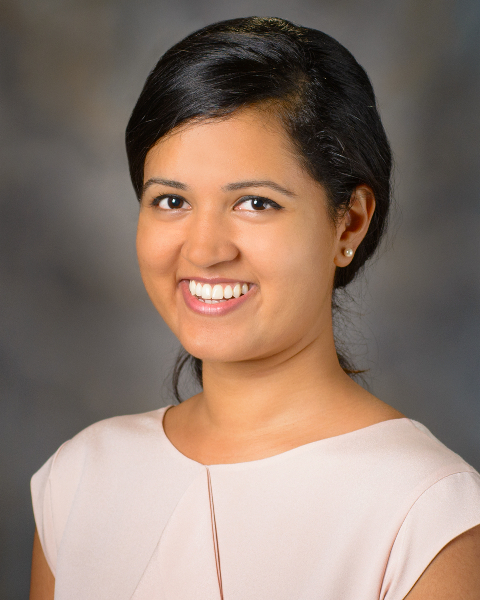PQA 01 - PQA 01 Lung Cancer/Thoracic Malignancies and Diversity, Equity and Inclusion in Healthcare Poster Q&A
2103 - Examining Barriers to Practice and Career Development among Non-Female GYN Radiation Oncologists and Non-Male GU Radiation Oncologists: A Nationwide Survey
Sunday, September 29, 2024
2:45 PM - 4:15 PM ET
Location: Hall C
Screen: 5

Shalini Moningi, MD
Brigham and Women's Hospital/Dana-Farber
Boston, MA, United States
Presenter(s)
S. Moningi1, P. Doyle2, N. Vapiwala3, S. Curran4, C. Kwan4, and M. Lam5; 1Department of Radiation Oncology, Brigham and Women’s Hospital/Dana-Farber Cancer Institute, Boston, MA, 2Brigham and Womens Hospital/Dana-Farber, Boston, MA, United States, 3Department of Radiation Oncology, University of Pennsylvania, Philadelphia, PA, 4Department of Radiation Oncology, Brigham and Womens Hospital/Dana-Farber Cancer Institute, Boston, MA, 5Department of Health Policy and Management, Harvard T.H. Chan School of Public Health, Boston, MA
Purpose/Objective(s): Gender diversity in academic radiation oncology (RO) has become a topic of growing interest in recent years. Studies examining strictly binary gender equity in the RO workforce indicate that practicing female ROs are outnumbered by their male colleagues at a rate of approximately 3:1. We investigated what challenges exist for non-male genitourinary (GU) and non-female gynecologic (GYN) RO physicians. Additionally, we also investigated physician’s experiences when their gender is discordant with the predominant gender of their patient population. Materials/
Methods: We conducted two national surveys of RO physicians working at an U.S. ACGME-accredited academic center. Survey questions focused on their career path, challenges faced, and barriers to practicing RO. Descriptive statistics were used for analysis of survey responses.
Results: We surveyed 42 non-male identifying ROs who had GU cancer listed as one of their primary clinical interests on their institutional website. 16 physicians responded, of whom 12 specifically attested to routinely treating GU. Most respondents (67%) felt that they experienced challenges in their careers as a result of their gender, and 75% of that portion stated that practicing GU RO specifically posed challenges. Furthermore, 57% of respondents reported challenges integrating with urology and medical oncology. 92% of respondents felt respected and valued by patients, compared with 66% who felt valued and respected by urology and medical oncology colleagues. Additionally, we surveyed 76 non-female identifying ROs who had GYN cancers listed as one of their primary clinical interests on their institutional website. 31 ROs responded, of whom 30 specifically attested to routinely treating GYN. 4 of the 30 ROs reported that they faced challenges as a result of their gender identity; all 4 reported challenges specifically related to being a GYN-focused RO, and 3 of the 4 reported that clinical interactions with patients and supporting staff posed challenges. 100% of responding GYN ROs felt respected by their patients, 93% (28/30) of responding physicians felt respected by colleagues in GYN RO, and 93% (28/30) of ROs felt respected by their colleagues in GYN medical and surgical oncology.
Conclusion: Our results show that there are significant differences between the experiences of physicians who treat patients who do not present as a similar gender to them. Non-male identifying ROs treating GU malignancies report challenges due to their gender more frequently than non-female identifying radiation oncologists who treat GYN cancers. These findings provide important context for the diversification of the RO workforce, and the oncology workforce at large.
Purpose/Objective(s): Gender diversity in academic radiation oncology (RO) has become a topic of growing interest in recent years. Studies examining strictly binary gender equity in the RO workforce indicate that practicing female ROs are outnumbered by their male colleagues at a rate of approximately 3:1. We investigated what challenges exist for non-male genitourinary (GU) and non-female gynecologic (GYN) RO physicians. Additionally, we also investigated physician’s experiences when their gender is discordant with the predominant gender of their patient population. Materials/
Methods: We conducted two national surveys of RO physicians working at an U.S. ACGME-accredited academic center. Survey questions focused on their career path, challenges faced, and barriers to practicing RO. Descriptive statistics were used for analysis of survey responses.
Results: We surveyed 42 non-male identifying ROs who had GU cancer listed as one of their primary clinical interests on their institutional website. 16 physicians responded, of whom 12 specifically attested to routinely treating GU. Most respondents (67%) felt that they experienced challenges in their careers as a result of their gender, and 75% of that portion stated that practicing GU RO specifically posed challenges. Furthermore, 57% of respondents reported challenges integrating with urology and medical oncology. 92% of respondents felt respected and valued by patients, compared with 66% who felt valued and respected by urology and medical oncology colleagues. Additionally, we surveyed 76 non-female identifying ROs who had GYN cancers listed as one of their primary clinical interests on their institutional website. 31 ROs responded, of whom 30 specifically attested to routinely treating GYN. 4 of the 30 ROs reported that they faced challenges as a result of their gender identity; all 4 reported challenges specifically related to being a GYN-focused RO, and 3 of the 4 reported that clinical interactions with patients and supporting staff posed challenges. 100% of responding GYN ROs felt respected by their patients, 93% (28/30) of responding physicians felt respected by colleagues in GYN RO, and 93% (28/30) of ROs felt respected by their colleagues in GYN medical and surgical oncology.
Conclusion: Our results show that there are significant differences between the experiences of physicians who treat patients who do not present as a similar gender to them. Non-male identifying ROs treating GU malignancies report challenges due to their gender more frequently than non-female identifying radiation oncologists who treat GYN cancers. These findings provide important context for the diversification of the RO workforce, and the oncology workforce at large.
